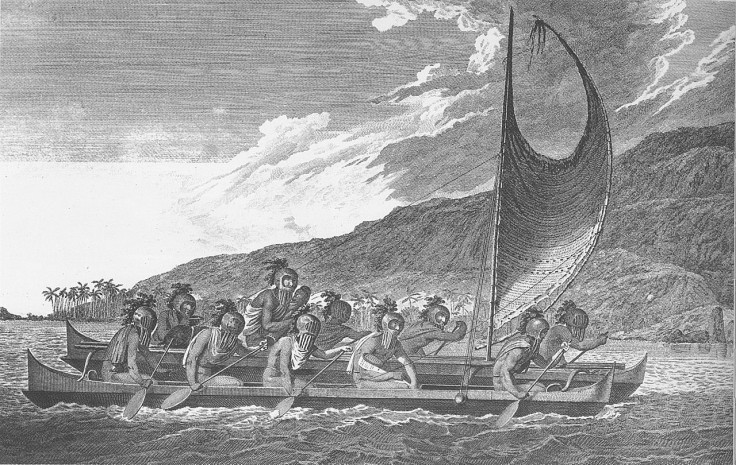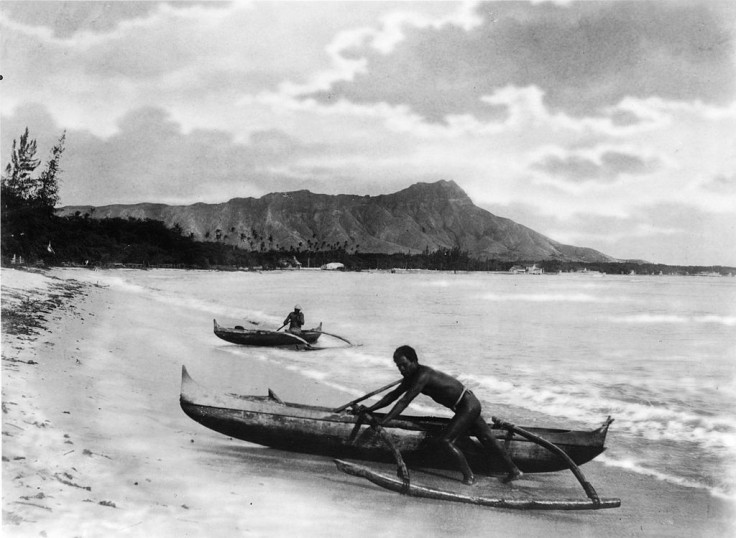600-Year-Old Canoe Found In New Zealand Reveals ‘Sophisticated’ Early Sailing Technology

A large plank from a rare, ancient canoe was discovered in New Zealand and has been linked to Polynesian seafarers, the largest of three major Pacific Ocean cultures and the islands’ first colonizers. The 600-year-old wooden plank was part of the hull of a much larger canoe that would have carried ancient Polynesians across wide expanses of the Pacific. The artifact sheds light on centuries-old Polynesian sailing technology, according to a study published Monday in the journal Proceedings of the National Academy of Sciences.
The canoe plank was found in 2012 in a sand dune near the Anaweka River on New Zealand’s South Island. It measured nearly 20 feet (6 meters) in length and was likely part of the hull of a massive 65-foot-long canoe made from a single piece of wood. A turtle carved into the side of the plank just above the waterline was a common motif in Polynesian boat crafting, researchers said. Radiocarbon dating put the canoe’s last voyage at around 1400 AD, according to Science Mag.
Archeologists said the vessel was among the most impressive canoes linked to 15th-century New Zealand ever found. “It was one of those situations where it sort of took your breath away,” Dilys Amanda Johns, a senior research fellow at the University of Auckland in Auckland, New Zealand, and lead author of the study, told the Los Angeles Times. “I’d never seen anything like it.”

Polynesians settled the Pacific islands from Samoa to New Zealand, Easter Island and Hawaii long before Europeans arrived. Polynesian navigation was surprisingly advanced for its time – seafarers traveled thousands of miles to tiny inhabited islands using only their senses and oral tradition. Scientists still know very little about how Polynesian seafarers successfully navigated such vast stretches of open ocean with limited technology; however, some historians have suggested their maritime expertise was the result of luck and drifting, not design.
The canoe is one of two that dates back to such an early period. The first was discovered 30 years ago in the Society Islands, according to Live Science. The Society Islands are a group of islands in the South Pacific Ocean that includes Tahiti and Maiao.
Researchers believe the canoe found in 2012 was constructed in New Zealand because the wood was from trees native to the islands. They said the vessel was most likely a double canoe, meaning it had a deck, a shelter and a sail that was pitched forward.

The canoe discovered in the 1980s was found about 2,500 miles away but was from the same time period. The vessels shared common design elements like transverse ribs carved into their hulls, according to researchers.
A second study also published Monday in the journal looked at the climate conditions at the time Polynesians were making their epic trans-Pacific voyages. Researchers studied everything from precipitation to wind patterns and atmospheric pressure and found several windows between the years 800 AD and 1600 AD in which trade winds favored landing in New Zealand. "There are these persistent 20-year periods where there are extreme shifts in [the] climate system," Ian Goodwin, a marine climatologist and the study's lead author, told Live Science. "We show that the sailing canoe in its basic form would have been able to make these voyages purely through downwind sailing."
© Copyright IBTimes 2024. All rights reserved.






















